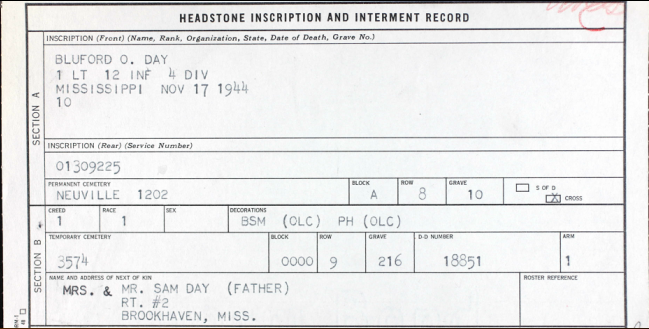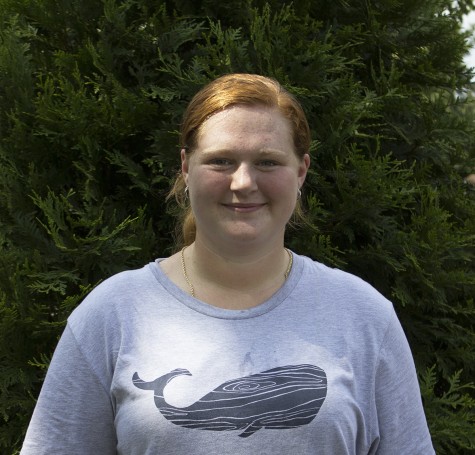Adam Stewart Pursues WWII Research
A clipping from Stewarts website of Bluford O’Day; this issued internment record was one of the original documents Stewart used to begin his research.
March 7, 2016
While not finishing college admissions paperwork or completing coursework, Senior Adam Stewart is compiling research on veterans and fallen soldiers of World War II through the MSMS WWII elective history course. In a previous article, an in-depth description of the project, required in history instructor Julie Heintz in her University U.S. History and elective WWII courses, can be found along with its topic requirements.
While enrolled in U.S. History as a junior, Stewart conducted research on First Lieutenant Bluford O’Day, a member of the 4th Infantry Division who was part of the forces to take Utah Beach on D-Day. Students were allowed to choose fallen soldiers originally from their home country, and Stewart selected O’Day due to their shared connection to Lincoln County.
From his research, Stewart created an informative and commemoratory website remembering the life and accomplishments of O’Day. His research can be found here.
Stewart concludes his website filled with research on O’Day’s biographical background and military experience with, “Bluford O’ Day was truly a forgotten hero, and even though this was made in dedication to him, more information on him, his family, or his unit would be much appreciated,” in efforts to further his research.
This year, in the WWII history elective also taught by Heintz, Stewart is compiling research on another soldier, his grandfather. While his choice does not fit the qualification of soldiers being buried overseas, Heintz allowed him to pursue this more family-based research along with several other students.
“This time I’m researching my grandfather who was originally from my county,” he said. “I’ve used a couple online sources, but since he’s a family member, I’ve been able to find relatives that knew him to contribute to my research.”
Other students currently in the class have also decided to study their family members, further personalizing the project like Stewart. For students who research local but unrelated fallen soldiers, contacting living relatives and descendants is also an option for further personal information. When Stewart was investigating the life of O’Day, however, this option was not open to him due to a lack of living descendants.
“I chose my grandfather as my soldier because I knew the story behind how he was awarded the Silver Star,” said Stewart. “His entire machine gun squad were casualties after running into a minefield, but my grandfather managed to carry all of their equipment and lay down cover fire for the advancing troops during a battle.”
While his research for this semester is still ongoing, Stewart intends to make another website in honor of his grandfather. “I look forward to sharing my information since making my grandfather’s story known to more than just my family will be a great experience,” he said.
Stewart also recommends the WWII class that allowed him to do this research project and learn more about the war. “It’s great to not just learn about World War II as a whole but also to learn about the smaller personal stories of those who served,” he said. “I’ve learned a lot about how to do a research project by using online and written sources to tracking down living relatives and getting testimonies.”









